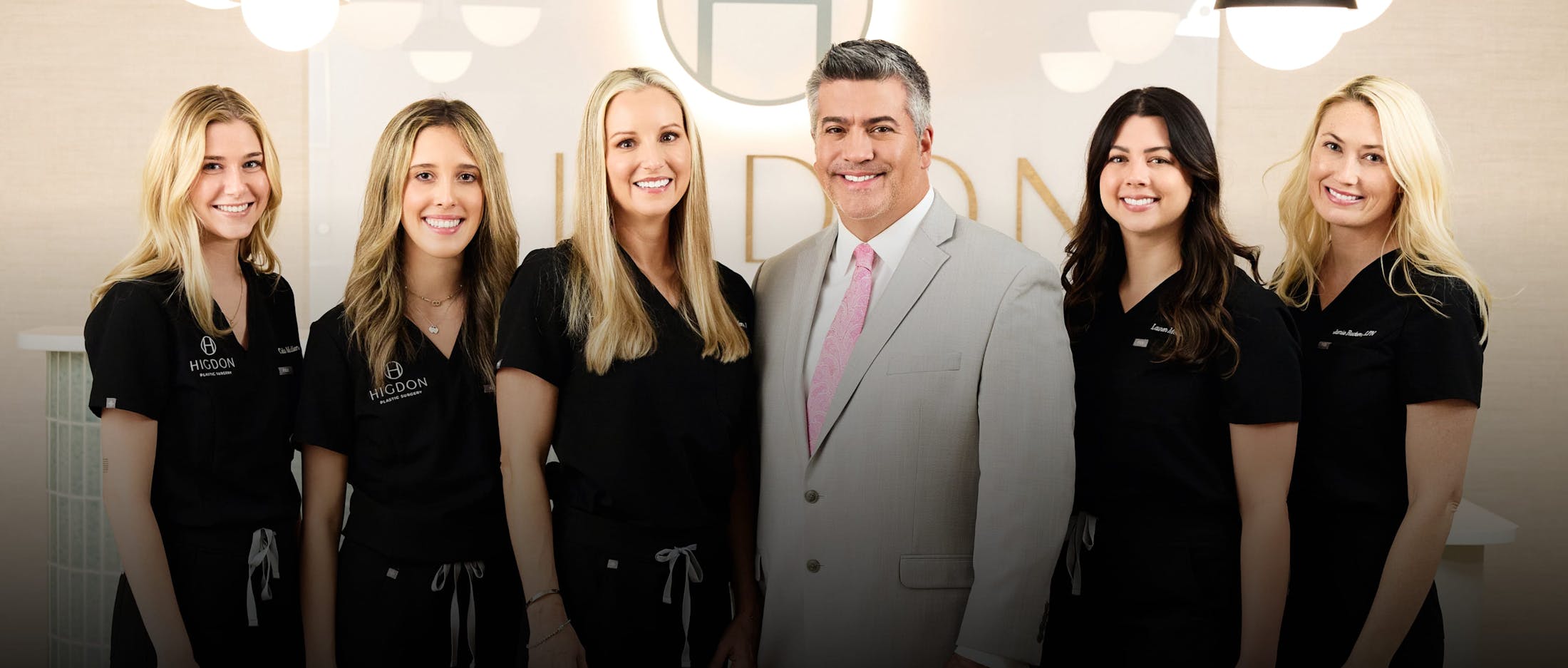
At Higdon Plastic Surgery in Franklin, recovery is as essential as the liposuction procedure itself. With my extensive experience and our team’s commitment to patient education, we go beyond surgery to ensure every individual feels informed, prepared, and supported. This blog shares eight trusted, evidence-based tips to help you navigate liposuction recovery confidently and clearly.
1) Wear Your Compression Garment (Exactly as Directed)
- Gentle, continuous compression helps control swelling and supports your new contours.
- You’ll typically wear an elastic bandage or compression garment during the early healing phase, although I will tailor the duration to your case.
2) Walk Early and Often to Reduce Blood-Clot Risk
- The CDC and NIH/NHLBI emphasize that surgical recovery is a higher-risk window for venous thromboembolism (VTE).
- I perform a risk assessment using a validated assessment model for you prior to surgery to help mitigate your VTE risk.
- Short, frequent walks and simple leg movements (as cleared by me) are proven clot-prevention basics.
3) Use Smart, Multimodal Pain Control
- Most patients do really well with my multimodal plan that I developed to prioritize non-opioid strategies (gabapentin, muscle relaxers, acetaminophen, and NSAIDs when appropriate), which limits opioids significantly.
- The American Society of Anesthesiologists advises minimizing or avoiding opioids when possible and using alternatives to manage post-surgical discomfort.
4) Nourish Healing with Protein, Fluids, and Fiber
- Recovery is metabolically demanding, so prioritize protein along with hydrating fluids and fiber to support tissue repair and regularity.
- Cleveland Clinic notes protein, iron, zinc, and vitamins A & C support wound healing.
- The NIH echoes the need for extra calories, protein, and micronutrients during wound recovery.
- Pro tip: Arnica montana and Bromelain supplements can be very helpful to minimize bruising and decrease swelling.
5) Don’t Smoke or Vape—Before and After Surgery
- Nicotine and tobacco restrict blood flow and delay healing.
- The American College of Surgeons recommends quitting 4–6 weeks before and remaining smoke-free 4 weeks after to cut wound-complication risk by ~50%.
- WHO also reports better outcomes when patients stop ~4 weeks before surgery.
- I may ask you to stop smoking for up to 3 months prior to surgery if additional procedures are added to liposuction, as risks are higher in those surgeries, to minimize overall risk for complications.
6) Protect Your Incisions and Follow Bathing Instructions
- Keep incisions clean and dry.
- Follow dressing guidance carefully.
- Don’t submerge (baths or pools) until you’re cleared by your surgeon.
7) Pace Your Return to Activity and Exercise
- Expect limited activity in week 1, increasing comfort in weeks 2–3.
- Many patients resume more normal routines as swelling fades around weeks 4–6.
- Rest assured, I will advise regarding when you can safely return to your favorite physical activities.
8) Attend Every Follow-Up—And Know When to Call Your Surgeon
- Follow-up visits let us monitor swelling, contours, and garment fit, and adjust your plan accordingly.
- Call sooner if you notice fever, worsening pain, unusual drainage, or leg swelling/shortness of breath.
- The American College of Surgeons provides a clear checklist of “when to call,” which aligns with our office guidance.
Why Patients Choose Higdon Plastic Surgery for Liposuction
Under the leadership of Dr. Kye Higdon, a double board-certified plastic surgeon with over 15 years of experience and international recognition as a leader, teacher, and researcher in aesthetic surgery, our team provides an evidence-based, compassionate recovery process designed to maximize both safety and results.
From the moment you leave the operating room, you’ll have access to a comprehensive recovery plan personalized to your body and lifestyle. This includes expert instruction on compression garment use, safe activity progression to reduce clot risk, and tailored nutritional recommendations to support wound healing. Our staff remains closely involved during your follow-up visits, ensuring swelling subsides properly, scars heal optimally, and your new contours take shape as intended.
For patients traveling from the Nashville area and beyond, we also offer virtual check-ins to make recovery guidance accessible wherever you are.
Our commitment to empowering patients with knowledge sets Higdon Plastic Surgery apart. We believe in equipping you with the tools, education, and ongoing support necessary to protect your investment in yourself and enjoy your results for years to come.
Ready to Refine Your Shape?
If you’re ready to refine your shape and experience recovery guided by trusted expertise and compassionate care, we invite you to schedule your consultation for liposuction with Higdon Plastic Surgery in Franklin today.
